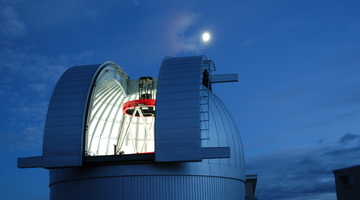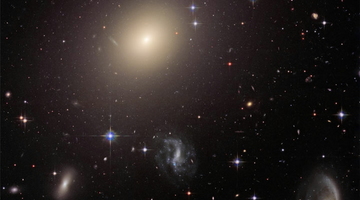Professor Denis Sullivan, from Victoria University of Wellington, explains why we can only detect extrasolar planets indirectly. He outlines the ‘wobble’ method of detecting planets around distant stars.
Transcript
PROF DENIS SULLIVAN
All the planets outside the solar system can only really be detected indirectly, which means you can’t see them by looking through a telescope. Inside the solar system you can get a telescope and look into the sky and see, for example, Mars, Jupiter, Saturn. If you’ve got a reasonable sized telescope, you can look through it with your own eyes and see that it’s different from a star.
But planets outside the solar system you can’t do that, yet. And the problem is that they’re so far away, but also they’re around some other star and the star dominates all the light and energy that comes off, so you have to use some indirect method. The indirect method that has been most successful is formally called the Radial Velocity Method, or Wobble Method, and basically the idea is that when you look at the light from stars, or any of these objects, the intensity of light changes as a function of wave length or colour. So by looking at the light from the star in great detail you can see that it has a companion making it go backwards and forwards. They’ are gravitationally attracted to each other and they go round each other, but when the companion is a planet the motion of the star is very, very small. You can’t see the planet directly as there is not enough energy coming off it, but by observing the star with very, very accurate instruments you can detect under suitable circumstances if it is going backwards and forwards as we look along the line of sight and that tells us it has got a companion of planetary mass.
Acknowledgement(s):
Dr. David Lafrenière, Gemini Observatory
NASA




